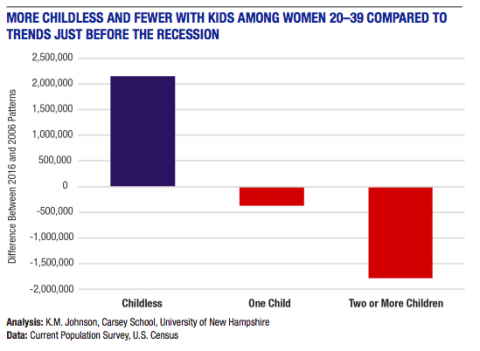download the brief
Key Findings

In 2016, there were 2.1 million more childless women of prime child-bearing age than anticipated. The 19.5 million women age 20–39 in 2016 who had never given birth was 12 percent more than demographers would have expected given child-bearing patterns just before the Great Recession. In 2016, there were 7 percent more women 20–39 than ten years earlier, but 22 percent more who had never had a child.
In 2016, there were also 1.8 million fewer women age 20–39 who had given birth to two or more children, some 10 percent fewer than expected given pre-recession trends. The cumulative result of these trends was 4 million fewer U.S. births between 2008 and 2016 than had pre-recession fertility rates been sustained. The Great Recession was certainly a factor in this, but changing social and cultural attitudes might also have been influential.
A critical question now is: how many of the 4 million fewer births have been delayed and will eventually occur, and how many will be foregone? The answer has important social and policy implications for the larger society that will be influenced by the fertility choices these women make in the next few years.
